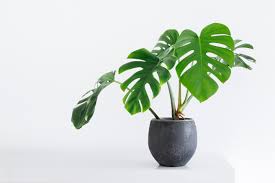
Looking for a fruit-bearing plant that doesn’t compromise with the aesthetics of your home? If so, we bring you a mind-blowing solution - growing banana trees at home!
The bright green flora of G9 banana plants and the delight of its fruits- what’s more, you’ll want them, right? And growing a banana plant in your home is also very cost-effective because of the affordable G9 banana plant prices. Additionally, growing & taking care is not a hassle if you know what the plant needs.
To help you grow a banana tree in your home, indoors or outdoors, we bring our comprehensive guide for you. But before we jump in on how to ensure the plant survives in your home, let’s first discuss the must-haves for its growth.
Requirements to Grow Bananas at Your Home
Climate
For banana plants to thrive, a tropical or warm subtropical climate (15ºC – 35ºC) works the best. These plants can survive in hot temperatures, given they have enough water. For temperatures below 14ºC, these plants will grow for a shorter time period and then the growth stops.
Water Requirements and Humidity
Bananas, featuring large and waterproof leaves, are susceptible to losing significant amount of water. While the water requirements for growing these plants will vary in different conditions, they typically thrive if there’s a good supply of water.
Before you learn more about planting this plant, we urge you to check the hybrid banana culture from our store with unbelievable G9 banana plant prices.
Now, we have a step-by-step guide for you to grow a banana plant on your own:
Get Banana Tissue Culture Plants or Seeds
The first step is to get high-yielding banana seeds or cultures (like G9 banana plants.) When growing the plants using a seed, soak the seeds in warm (lukewarm) water for about a day or two until they are soft and you can observe embryo sprouting. For tissue culture, you will get potted banana plants.
Soil Mixing

Now comes the most important part of growing a plant in your home - Preparing the soil. The soil requirements for a healthy banana plant are listed below:
|
Soil |
Fertile |
|
Drainage |
Well-drained (loamy and salty clay loam soil) |
|
pH |
6-7.5 |
|
Depth |
1.6–3.3 feet (0.5–1 m) |
In addition to these factors, the banana plants also need soil rich in organic matter.
When transferring the sprouted seeds or banana tissue culture plant to the soil, choose a large container that can provide space for the plant to grow. A growing banana plant is a heavy feeder, making it necessary to choose nutrient-rich soil.
Note: If you opt for fertilizer, it is advisable to go for organic alternatives to replenish vital minerals and nutrients.
Watering
Underwatered or overwatered, the banana plants will not grow optimally in either of the conditions.
If underwatered, the growing plant will show signs like wilting leaves, leaves drooped over the midrib, or brown leaf edges. If you feel the soil is dry, you must immediately water the plant even if it shows no signs of watering.
On the contrary, excessive water can result in root rot, which can also cause the plant to die. Browing (or yellowing) of leaves, droopy leaves, soggy soil, or root rot are common indicators of the overwatering of a banana plant.
So, now let’s answer the most important question: How often to water it?
For newly cultivated or germinated bananas, begin with watering daily without saturating the growing seedlings. You can then replace watering the plant every 3-4 days (for hot weather) or 7-8 days (colder periods.) For grown plants, schedule a deep watering routine until the soil soaks up water sufficiently.
Sunlight Exposure

Sunlight is a must for optimal growth of banana tissue culture plants. They grow well in direct sunlight (with at least 6 to 8 hours of direct exposure to the sunlight.) If you are planning to grow a banana plant indoors, it is recommended that you place them in south-facing windows. In cases of limited sunlight exposure, grow lights are an effective solution.
Final Words
In this article, we helped you to ensure your G9 banana plants grow healthy. By taking care these factors, growing home-grown bananas becomes easier for everyone. But even with our step-to-step guide, situations might arise where you don’t know what to do.
If you ever get caught in that situation and don’t know why is your plant responding in a particular way, our experts are just a message away.
Take a look at our blog ppsts where we make it all about growing and buying plants online in India indoor and outdoor plants!





